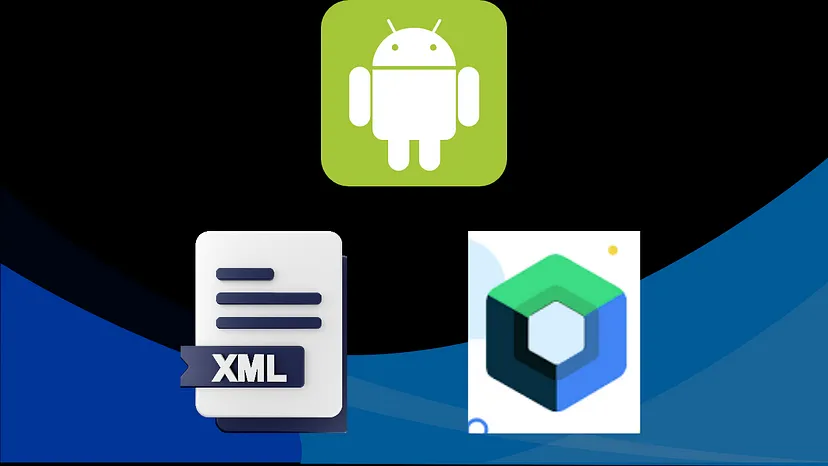Introduction
As Android development continues to evolve, developers in 2025 face an important decision: continue with traditional XML-based UI development, or adopt the modern, declarative approach of Jetpack Compose. Both options offer unique advantages and are supported by Google, but selecting the right toolkit can significantly impact your development speed, code maintainability, and user experience.
This article offers a detailed comparison of Jetpack Compose and XML layouts based on productivity, performance, tooling, learning curve, and use cases, helping you determine which is best suited for your Android projects in 2025.
What is Jetpack Compose?
Jetpack Compose is Android’s modern UI toolkit built entirely in Kotlin. It allows developers to create responsive and dynamic UIs using a declarative programming model, where UI elements automatically update based on underlying data changes.
Key Features
- Written entirely in Kotlin
- Fewer lines of code
- Real-time previews and live updates
- Better integration with Jetpack libraries
- Material Design 3 support by default
What is XML in Android UI Development?
XML has been the traditional way of defining UI in Android apps. Layouts are written in separate XML files and then linked to logic in Java or Kotlin code. It follows an imperative model, where UI is manually updated in response to logic changes.
Key Features
- Visual layout editing through Android Studio
- Well-established and thoroughly documented
- Compatible with a large ecosystem of libraries
- Clear separation of UI and business logic
1. Developer Productivity
Jetpack Compose
- Reduces boilerplate code significantly
- UI components respond directly to data state
- Live preview makes development faster and more interactive
XML
- Requires manual inflation and referencing of views
- Often needs data binding or view binding to reduce boilerplate
- Slower iteration speed for complex UIs
Verdict: Jetpack Compose offers faster development cycles and cleaner code.
2. Learning Curve
Jetpack Compose
- Requires a solid understanding of Kotlin and reactive programming principles
- May be challenging for developers new to functional programming or declarative UI models
XML
- Easier for beginners to grasp
- Benefits from years of tutorials, community forums, and developer guides
Verdict: XML is more beginner-friendly, especially for those new to Android.
3. Performance
Jetpack Compose
- Built with performance optimizations for modern hardware
- Efficient recomposition engine updates only the components that need changes
- Still maturing with ongoing performance tuning in newer versions
XML
- Offers stable and predictable performance
- Optimized for compatibility across a wide range of Android devices
Verdict: Tie — both toolkits perform well, with Jetpack Compose improving rapidly.
4. Tooling and IDE Support
Jetpack Compose
- Integrated deeply into Android Studio (from version Arctic Fox onward)
- Offers live previews, code completion, and UI inspection tools
- Streamlined build process compared to XML
XML
- Mature tooling with layout editor, constraint layout visual tools, and lint support
- Occasionally suffers from preview inconsistencies
Verdict: Jetpack Compose provides a more advanced and responsive development environment.
5. Community and Ecosystem
Jetpack Compose
- Strong backing from Google with rapid updates and feature additions
- Increasing number of libraries and community resources focused on Compose
XML
- Large and well-established developer base
- Rich collection of third-party libraries, many of which still rely on View-based architecture
Verdict: Tie — XML has maturity, while Compose has momentum and modern support.
6. Migration and Compatibility
Jetpack Compose
- Can coexist with XML in hybrid apps
- Gradual migration possible using ComposeView
- Ideal for new apps or major UI overhauls
XML
- Best suited for apps with legacy architecture
- Easier to maintain if the project was built entirely using traditional Views
Verdict: Use Compose for new projects, and XML for maintaining older applications.
When to Use Jetpack Compose in 2025
- You’re starting a new Android app
- Your team is fluent in Kotlin
- The UI demands real-time updates, animations, or complex interactions
- You aim for a scalable and maintainable codebase
When to Use XML in 2025
- You’re working on an existing app with XML layouts
- Your team lacks experience with Jetpack Compose
- You depend on libraries that do not yet support Compose components
- The project doesn’t require advanced or dynamic UI logic
Final Thoughts
Jetpack Compose is the future of Android UI development. It offers a more modern, intuitive, and efficient way to build interfaces, especially for developers already comfortable with Kotlin and reactive programming. While XML remains relevant and well-supported, its role is gradually shifting toward legacy support and transitional use.
For most projects beginning in 2025, Jetpack Compose is the recommended choice, especially if long-term maintainability, rapid development, and responsive UIs are priorities.
